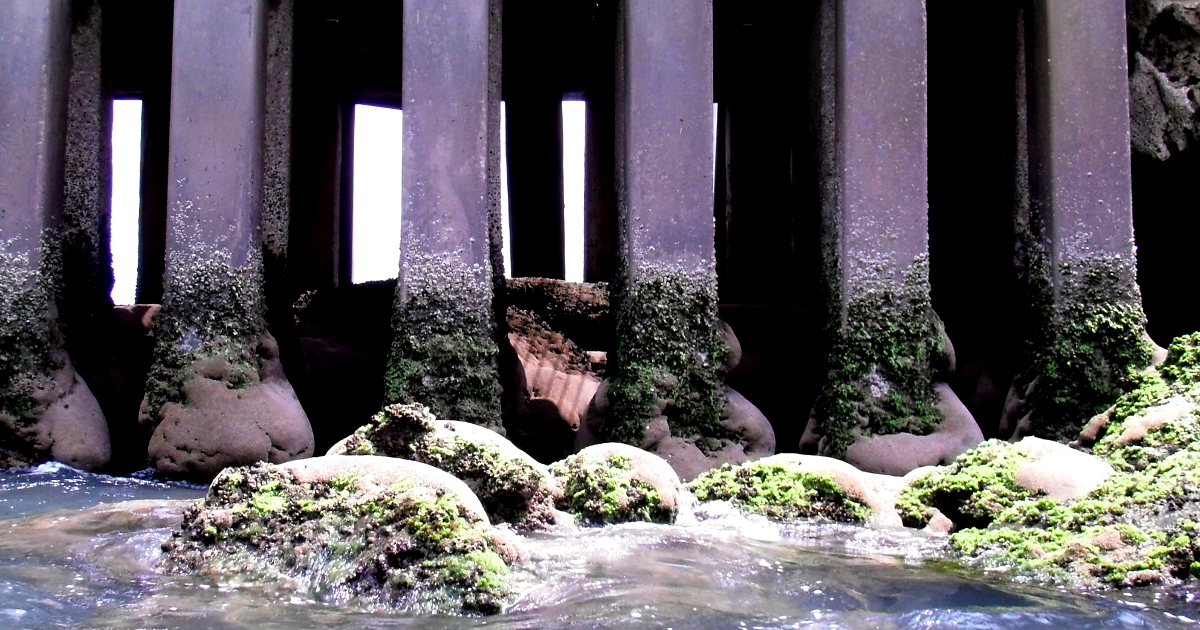
The North Jetty at Sebastian Inlet is a living laboratory.
One fascinating observation we make as surfer-scientists regards the Sabellariid worm reef that grows at Sebastian Inlet. Along the base of the pilings of the north jetty, the worm reef often grows large apple-bottom shaped colonies. These colonies are an intrinsic part of the coastal ecology at Sebastian Inlet. Back in the day, this presence of worm reef used to help create a living wall that helped reflect wave energy.
Nowadays, the worm reef doesn’t connect their colonies to create the living wall. During the North jetty’s rehabilitation from 2001 to 2003, an outer row of pilings was installed. Due to these outer pilings, the jetty acts to dissipate wave energy. Therefore, our solution to restore First Peak is to restore the wave reflection that these outer pilings ruined. We can accomplish this by providing more substrate between the outer pilings for the worm reef to colonize.
We’ve been working on our Coastal Ecology initiative for a long time.
In 2009, our team began photo-documenting the worm reef at Sebastian Inlet. In 2011, the First Peak Project won an ecological monitoring grant from the PADI Foundation in Beverly Hills California. The Sabellariid certainly are an intriguing member of the local coastal ecology at Sebastian Inlet, especially if these tube worms can help us restore a surfing wave.
Blog posts under the category Coastal Ecology will continue to observe, study, and pay respects to the worm reef. With enough support, we are looking forward to performing a proper population study on the worm reef. With this study, we aim to include these little sessile feeders into an ecologically sound solution for bringing back the peak.
If you were worm reef, what would you think about our Coastal Ecology initiative?
How would feel you about helping the humans restore a surfing wave? The jetty has been home to the worm reef for a long time so be respectful when leaving comments about them. Remember, we’re in their house now.